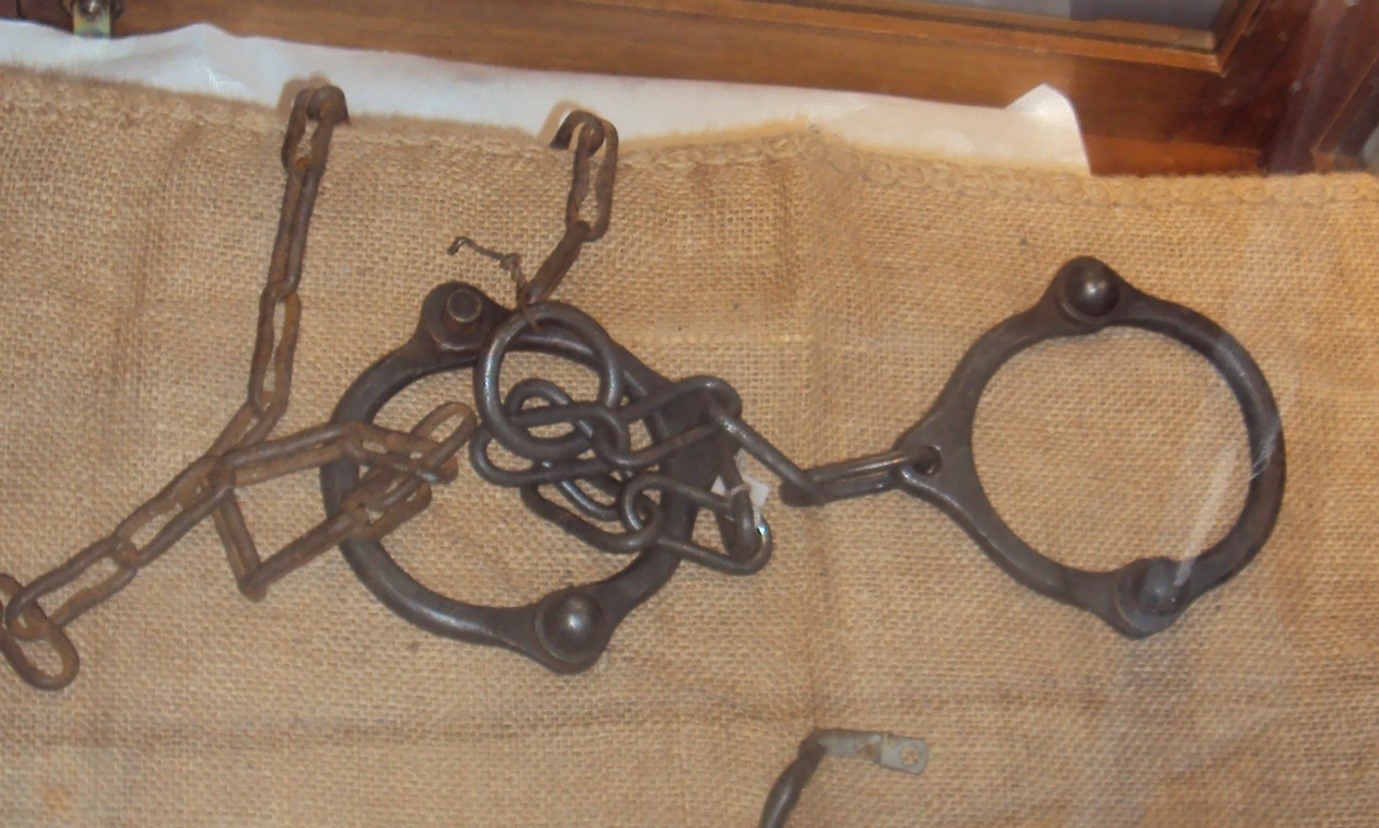Convicts at Towrang Stockade
According to C MacAlister During the period there were hardly ever less than two hundred prisoners at Towrang.1. This estimate seems high as there probably was not sufficient accommodation for them at Towrang. Wyatt in his book quotes Judge Burton as saying that in 1838 there were seventy men in irons and twenty one out of irons. 2. Burton’s estimate seems the more likely.
MacAlister goes on to say:
The Towrang convicts were, by regulation classified into two parties: the “light sentence” (or seven years men) being engaged on the lighter tasks, such as looking after officers’ horses, and quarters; driving the Stockade bullock teams; felling the trees along the road-line; and so on; while the Iron-gang (comprising the fourteen years men and “lifers”) were hard at it packing and rolling (i.e., building) different sections of the main Southern road between Marulan and Goulburn.1.
Convicts’ Life

The etching is from J Blackhouse’s Narrative of a visit to the Australian Colonies. London 1843
Reproduced with the permission of the Mitchell Library, Sydney
MacAlister states that:
The prisoners wore a yellow-and-black uniform of rough material, and marched in files to their work to the rattle and jingle of their irons. A guard of soldiers with fixed bayonets escorted the men to their allotted toil, and stood over them at work. At day-break in the summer, an hour later in winter, the prisoners were out and toiled all day like beasts of burden; their food being generally of the coarsest – often barely enough to keep body and soul together. At five in the afternoon they were marched back to camp, and after a supper of salt junk, damper and “posts-and-rails” tea, they were sent to their sleeping boxes for the night – members of the Iron-gangs often having to sleep with their fetters on like so many chained dogs. The convicts at Towrang slept on bare boards with a blanket apiece; ten men being locked up in each box or cell. These cells were about twelve feet square.” 1.

A replica of convict uniform located in the Rocky Hill Museum Goulburn.

Leg Irons, located in the Rocky Hill Museum, Goulburn.
Discipline was harsh for even trivial offences. Charles MacAlister in his book comments:
It seems to be the chief object of the penal system to increase the depravity it pretended to check, and to permit the wholesale contamination of the minds of the prisoners. I have known men to get their twenty-five or fifty lashes for such “terrible” offences as having a smoke, or speaking to a traveller passing by, and for the least neglect of duty.
Absconding from a road-gang or from an employer, was one of the worst lapses, and woe betide the escapee who was retaken. His sentence – even if he had not committed any crime during his “furlough” – would read much as follows, viz. : – Joseph Green, charged with absconding from “Captain Mankiller’s Station (or, say, from No. 9 Iron-gang); Guilty, sentenced to receive 100 lashes.1.
Punishment was administered at the Goulburn triangles. MacAlister records that:
The Government floggers at the penal stations were generally wretches who volunteered for this brutal work, so as to escape the penalties of the Iron-gang, of which they were often originally members. The author particularly remembers two such callow fellows, viz.:- Billy O’Rourke (the Towrang flogger) and Black Francis – a Negro – the Goulburn castigator, from 1838 to 1841. Billy O’Rourke was a small, wizened-looking object, but muscular, and he revelled in his work. Black Francis used to lay the cat on with savage ferocity. He met with a sudden and tragic end – being found one morning “as dead as a door nail”, in the bush near Run of Water, and with three leaden slugs in his carcase. 1.
A number of convicts managed to escape from the Stockade. One such case was reported in the Sydney Morning Herald of 1840: Henry Sears and John Daley, runaways from the Towrang Stockade, apprehended with firearms at the farm of Mr. J. White, near Berrima. Guilty – Sears 14 years, an old offender, Daley, 7 years, to a penal settlement. The Governor has given William Monday a conditional pardon for the apprehension of the two bushrangers. 3.
It was probably not uncommon for escapers to turn to bushranging as they would have few options as to how to survive.
Sources
- C MacAlister Old pioneering Days in the Sunny South. Published by C MacAlister Publication Committee. 1907
- R T Wyatt History of Goulburn. Municipality of Goulburn, Goulburn, NSW, 1941
- Sydney Morning Herald 29 July 1840 page 2
